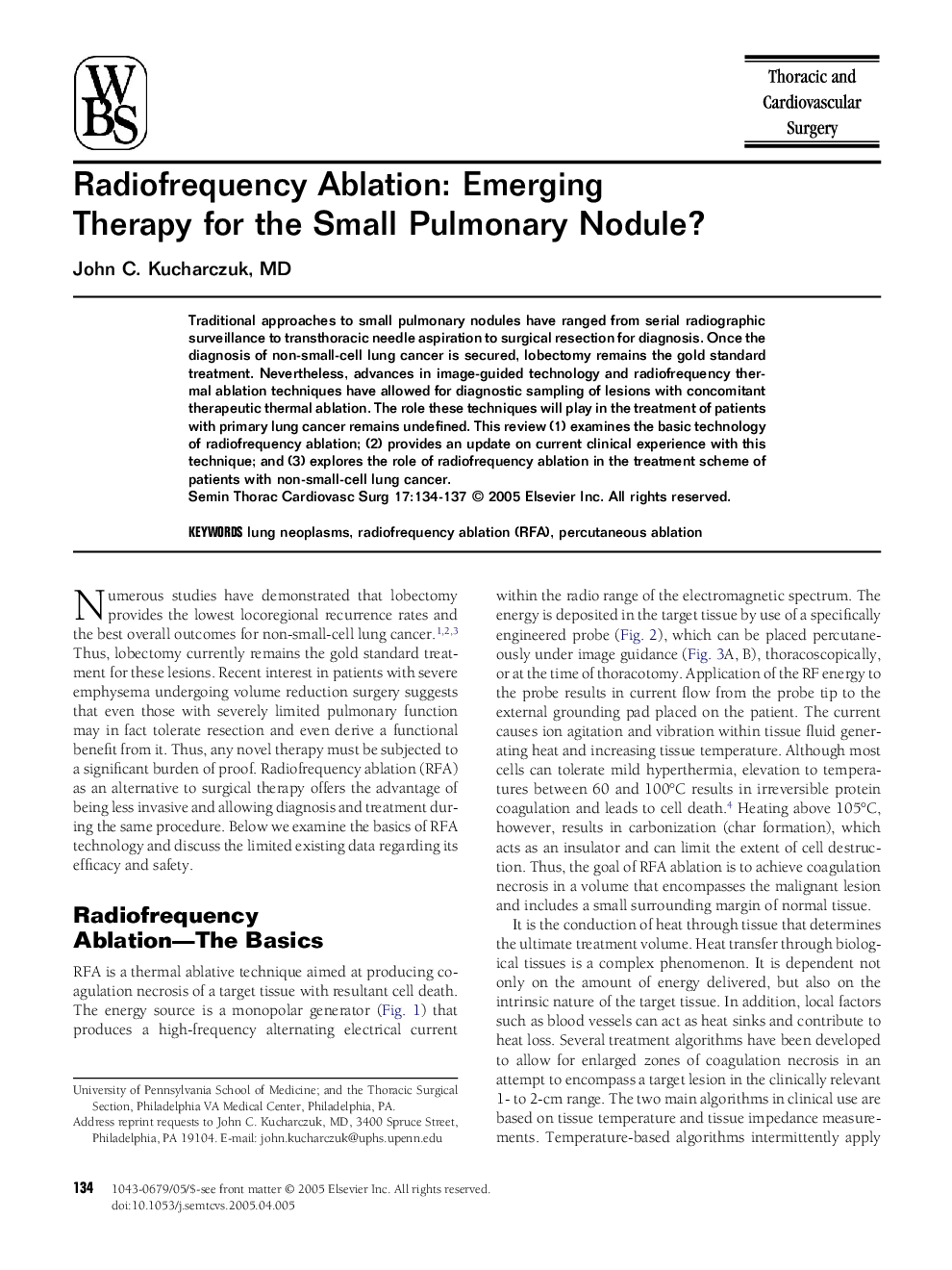| Article ID | Journal | Published Year | Pages | File Type |
|---|---|---|---|---|
| 9184337 | Seminars in Thoracic and Cardiovascular Surgery | 2005 | 4 Pages |
Abstract
Traditional approaches to small pulmonary nodules have ranged from serial radiographic surveillance to transthoracic needle aspiration to surgical resection for diagnosis. Once the diagnosis of non-small-cell lung cancer is secured, lobectomy remains the gold standard treatment. Nevertheless, advances in image-guided technology and radiofrequency thermal ablation techniques have allowed for diagnostic sampling of lesions with concomitant therapeutic thermal ablation. The role these techniques will play in the treatment of patients with primary lung cancer remains undefined. This review (1) examines the basic technology of radiofrequency ablation; (2) provides an update on current clinical experience with this technique; and (3) explores the role of radiofrequency ablation in the treatment scheme of patients with non-small-cell lung cancer.
Related Topics
Health Sciences
Medicine and Dentistry
Cardiology and Cardiovascular Medicine
Authors
John C. MD,
